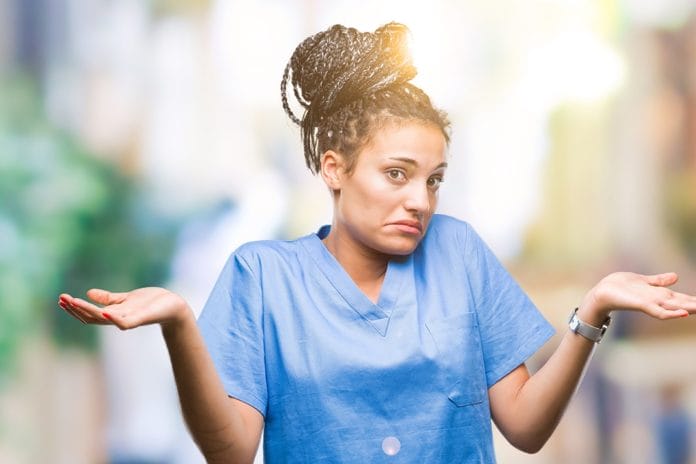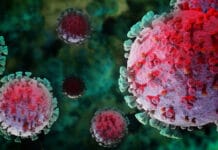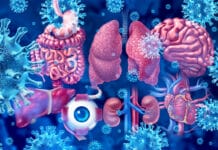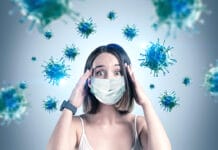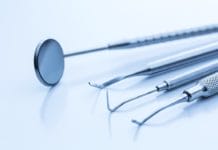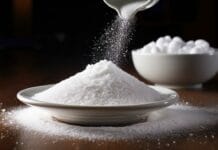At the beginning of the COVID-19 pandemic, many dental offices were mandated to discontinue all elective procedures. The mandatory shutdown caused some dental offices to shut their doors, offering no elective dental treatment and only emergency treatment. As the states rescinded their shutdown orders, the Centers for Disease Control and Prevention (CDC) had not updated guidelines regarding elective care and held firm on their recommendation that elective dental procedures should be postponed.
When dental offices opened their doors, new protocols were implemented based on the guidance given by the American Dental Association (ADA) and policies developed by individual state agencies. Over time, all dental procedures had resumed in most dental practices, as the CDC had updated its recommendation on resuming elective procedures (but the agency continues to stipulate limiting aerosol-generating treatment modalities).1
Understanding what recommendations or guidelines versus mandates are, and which agency trumps the other, is a harrowing task. It is important for the clinician to read their state’s dental practice act to ensure that the required guidelines are being met. For example, when using the ultrasonic scaler, air/water syringe, or handpiece, the Occupational Safety and Health Administration (OSHA) states, “Workers within 3 feet of a patient or equipment during an aerosol-generating procedure must wear a fit-tested N95 filtering facepiece respirator or more protective respirator. (Particulate filters with any N, R, or P and 95, 99, or 100 rating are protective against the COVID-19 virus.)”2
To clarify the appropriate guidelines to follow, OSHA requirements are mandates. If your state’s dental practice act instructs dental professionals to follow the CDC guidelines, then the CDC guidelines are a state requirement and are mandated.
The array of changes to recommendations, guidelines, and mandates for dental care operations has created an environment of confusion, fear, and anxiety among dental staff and patients. Some dental offices, though, have increased their screenings prior to appointments, have upgraded the personal protective equipment used, and have limited the use of aerosol-producing instrumentation. However, other dental offices have opened “business as usual” without complying with guidelines provided by state agencies and public health officials. The lack of clear-cut mandates and what is a mandate vs. a recommendation has caused struggles for both dental patients, front office staff, and dental clinicians.
The Patient
Dental patients have been adversely challenged by the presence of the COVID-19 pandemic. Since the reopening of dental offices, some patients find themselves struggling with the importance of maintaining their oral health versus taking all precautions to prevent COVID-19 infection.
Most dental offices have implemented safety protocols such as extending patients’ appointment times, practicing social distancing in the waiting rooms, advising patients to wear masks, pre-screening for COVID-19, screening for vitals, and reappointing medically high-risk patients.
The efficiency of these protocols will help to reassure patients that they have entered a safe environment and assist in relieving any reservations the patient may have in resuming their dental maintenance.
The Dental Front Desk
The front desk’s efficiency and effectiveness are vitally important to any dental office. The front desk staff is the first impression in assuring the patients that they have entered a safe environment and ready to continue with their appointed treatment. The front desk staff is also the first defense in COVID-19 transmission prevention.
The production of airborne particles in the dental office proposes a high-risk environment, thus provoking fear among patients seeking dental treatment. Therefore, providing a confident and well-maintained office environment is key to promoting a positive patient experience. According to Dr. Gehani, president of the ADA, reassuring patients that all safety measures are in place to prevent COVID-19 transmission is key to providing a positive dental appointment environment. Dr. Gehani released a statement on April 29, stating, “Good communication is the key to making patients and the dental team comfortable as they return to our offices. Dental team members who are confident that their office is keeping up with all appropriate prevention measures will convey that confidence to patients.”3
Many of the personnel working at the front desk are not clinically trained and may have never served in a clinical position. Therefore, communicating and educating the front desk staff about the COVID-19 disease transmission process and the importance of maintaining preventive protocol measures is an important step in providing a safe environment for all dental staff and patients. Although the front desk dental staff is not personally placed in direct contact with the aerosols generated during dental appointments, heightened concerns for their role in safety are justified.
Many protocols can be initiated in the dental setting that may be managed by the front desk staff and be advantageous to reducing COVID-19 risk. Initially, providing extended dental appointments will help to manage social distancing by reducing the number of patients in the dental office.
Another example is utilizing the ADA’s COVID-19 “Patient Prescreening Form” prior to the patients entering the dental practice.4 As recommended by the CDC in their Interim Infection Prevention and Control Guidance for the Dental Settings During the Coronavirus Disease 2019 (COVID-19) Pandemic, using teledentistry as an alternative when warranted by initiating a “telephone triage to assess the patient’s dental condition and determine whether a patient needs to be seen” will ensure any unnecessary dental visits.1 Also, as recommended in the CDC control guidance, limiting “the number of visitors accompanying” the patient to those “who are necessary” will reduce the overflow in the waiting room and ensure proper social distancing recommendations are maintained.1
In addition, mandating that patients wear face coverings prior to entry (each dental front desk staff member should be wearing a face-covering as well) not only protects the patient from potential infection but also other waiting patients and dental staff. Many states have mandated masks for indoor settings; reviewing your state mandates is recommended.
Lastly, taking the temperature of the patient and any other visitors entering the dental practice is an important step to eliminating possible COVID-19 exposure. A fever is measured at greater to or equal to 100.0 degrees Fahrenheit per the CDC.
Additionally, other measures recommended by the CDC that dental offices can apply to ensure a safe setting are providing hand hygiene stations with “an alcohol-based hand rub (ABHR) with at least 60% alcohol,” “posting visual alerts at entrances and in strategic places,” “installing physical barriers at reception areas,” such as Plexiglass, and removing “toys, magazines and other frequently touched objects from the waiting room.”1
Achieving consistency during patient arrival will not only ensure patient safety and peace of mind but will also ensure the safety of all dental staff.
The Dental Assistant
The dental assistant’s apprehension about returning to work during the pandemic is a legitimate concern considering that most dental treatment performed by the dentist results in high aerosol production. The aerosol production during dental treatment includes air/water syringe use and high-speed handpiece use. In order to decrease the aerosol development in the treatment operatory so that the risk to COVID-19 transmission can be reduced, the CDC, OSHA, and the ADA have issued guidance for dental offices during treatment operations.
Aerosol reducing guidance includes installing high-efficiency particulate air (HEPA) filtration systems, increasing personal protection equipment for doctors and dental assistants, using rubber dams, using a high-volume evacuator (HVE), and creating enclosed treatment areas. The more equipped the dental practice is the safer the environment for the dental staff, dentists, and patients. Although the HEPA filtration system is a costly recommendation that may not be implemented for this reason, the use of the rubber dam and HVE is a cost-effective method in aerosol reduction.
In addition to the increased risk of COVID-19 exposure, the use of additional personal protective equipment (PPE) can be cumbersome and overwhelming for the dental assistants, as well as for hygienists and dentists. The use of disposable gowns and gloves, N95 masks, ASTM level 1 or 2 masks worn over the N95 mask and a face shield is obtrusive. However, the use of additional PPE is effective in reducing the inhalation of the aerosols produced during dental treatment.
Also, any re-useable PPE should be contained in the room during the procedure, thus preventing staff from moving about the office in contaminated PPE. The accessibility of proper protocol and the use of additional PPE will ease the apprehension of all clinical dental staff, such as the dental assistant.
The Dental Hygienist
The initial discontinuation of elective treatments in dental offices produced mixed feelings in the dental hygiene community. For one, dental hygienists realized they were not considered an “essential employee.” However, as states reopened amid a continuing uptick of COVID-19 cases, allowing dental hygienists to return to the dental office, a new reality set in. The lack of mandates to resume dental hygiene treatment, as well as the difficulty in procuring PPE, heightened concerns in the dental hygiene community over hygienists returning to their jobs.
In addition, OSHA’s Return to Work Guidance included a risk assessment ranging from “very high to lower risk for aerosol exposure.”5 The risk assessment placed dentistry, with no exception to the dental hygienist, in the “very high to high” risk category due to the emission of aerosols during treatment.
Although the dental hygienists’ treatment protocols are like those implemented by the dentist − such as containment, increased PPE, and aerosol reduction − the physical stress, due to alteration and limitation of instrument usage, is much higher. The elimination or limited use of the ultrasonic during dental hygiene treatment poses a roadblock to providing a thorough prophylaxis. Subsequently, the CDC recommendation to limit the dental hygiene aerosol-producing instruments inhibits the ability to provide effective prophylaxis treatment.
The physical wear on the dental hygienists due to hand instrumentation, in addition to the expanded PPE throughout a full-time workday, is another example of the obstacles dental hygienists are facing during the COVID-19 pandemic.
In addition, some dental practices are employing cost-cutting measures due to loss of income during the shutdown. Some offices are proceeding with daily operations without adhering to ADA, CDC, and OSHA workplace guidelines to ensure staff and patient safety. This trend creates mental fatigue on some practicing dental hygienists because of fear of their personal safety as a clinician and what they could be exposing their family to and the safety of their patients.
In Conclusion
Unfortunately, the CDC (depending on your state’s dental practice act) and ADA are not in a position to enforce “mandates” on dental operations. Consequently, the dental staff must band together to ensure protocols are established for a safe dental environment. As educated and state-licensed professionals, dental hygienists (or any dental staff members) should not have to choose between financial security and their health.
During these unprecedented times of COVID-19, dental offices are adapting to a new norm with guidance from the ADA, the CDC, their local health department, and state mandates. Although the mandates are limited, the guidance helps to navigate protocols to resume business in a safe environment for patients and staff. However, it is a guessing game with no common ground between dental office operations.
Also, the lack of mandates places an unprecedented burden on returning dental staff. As more scientific data is gathered in reference to the COVID-19 virus, new changes in dental protocols may occur in the future. For now, increased PPE, limited aerosol-producing procedures, and heightened patient screenings are the new norm of daily dental life to ensure safety to patients and staff.
Need CE? Check Out the Self-Study CE Courses from Today’s RDH!
Listen to the Today’s RDH Dental Hygiene Podcast Below:
References
- Guidance for Dental Settings. Interim Infection Prevention and Control Guidance for Dental Settings During the COVID-19 Response. Center for Disease Control and Prevention. August 4, 2020. Retrieved from https://www.cdc.gov/coronavirus/2019-ncov/hcp/dental-settings.html
- General Coronavirus Prevention Under Stay Home – Stay Healthy Order. DOSH DIRECTIVE Department of Labor and Industries Division of Occupational Safety and Health.May 15,2020. https://lni.wa.gov/dA/36e85758be/DD170.pdf
- ADA president: Reopening dental practices needs a team approach. American Dental Association. April 29, 2020. Retrieved from https://www.ada.org/en/publications/ada-news/2020-archive/april/ada-president-reopening-dental-practices-needs-a-team-approach
- ADA Return to work interim guidance toolkit. American Dental Association. Retrieved from https://pages.ada.org/return-to-work-toolkit-american-dental-association
- Occupational Safety and Health Administration. OSHA Fact Sheet. Healthcare workers classified as Very High to High exposure risk for pandemic Influenza. United States Department of Labor. 2020. Retrieved from https://www.osha.gov/Publications/exposure-risk-classification-factsheet.html

